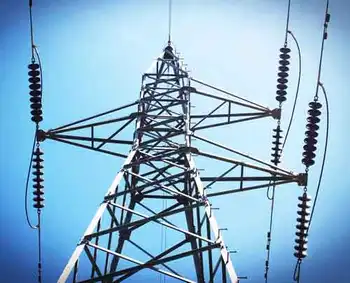Scientists generate 'electricity from thin air.' Humidity could be a boundless source of energy.

High Voltage Maintenance Training Online
Our customized live online or in‑person group training can be delivered to your staff at your location.

- Live Online
- 12 hours Instructor-led
- Group Training Available
Air Humidity Energy Harvesting converts thin air into clean electricity using air-gen devices with nanopores, delivering continuous renewable energy from ambient moisture, as demonstrated by UMass Amherst researchers in Advanced Materials.
Key Points
A method using nanoporous air-gen devices to harvest continuous clean electricity from ambient atmospheric moisture.
✅ Nanopores drive charge separation from ambient water molecules
✅ Works across materials: silicon, wood, bacterial films
✅ Predictable, continuous power unlike intermittent solar or wind
Sure, we all complain about the humidity on a sweltering summer day. But it turns out that same humidity could be a source of clean, pollution-free energy, aligning with efforts toward cheap, abundant electricity worldwide, a new study shows.
"Air humidity is a vast, sustainable reservoir of energy that, unlike wind and solar power resources, is continuously available," said the study, which was published recently in the journal Advanced Materials.
While humidity harvesting promises constant output, advances like a new fuel cell could help fix renewable energy storage challenges, researchers suggest.
“This is very exciting,” said Xiaomeng Liu, a graduate student at the University of Massachusetts-Amherst, and the paper’s lead author. “We are opening up a wide door for harvesting clean electricity from thin air.”
In fact, researchers say, nearly any material can be turned into a device that continuously harvests electricity from humidity in the air, a concept echoed by raindrop electricity demonstrations in other contexts.
“The air contains an enormous amount of electricity,” said Jun Yao, assistant professor of electrical and computer engineering at the University of Massachusetts-Amherst and the paper’s senior author. “Think of a cloud, which is nothing more than a mass of water droplets. Each of those droplets contains a charge, and when conditions are right, the cloud can produce a lightning bolt – but we don’t know how to reliably capture electricity from lightning.
"What we’ve done is to create a human-built, small-scale cloud that produces electricity for us predictably and continuously so that we can harvest it.”
The heart of the human-made cloud depends on what Yao and his colleagues refer to as an air-powered generator, or the "air-gen" effect, which relates to other atmospheric power concepts like night-sky electricity studies in the field.
In broader renewable systems, flexible resources such as West African hydropower can support variable wind and solar output, complementing atmospheric harvesting concepts as they mature.
The study builds on research from a study published in 2020. That year, scientists said this new technology "could have significant implications for the future of renewable energy, climate change and in the future of medicine." That study indicated that energy was able to be pulled from humidity by material that came from bacteria; related bio-inspired fuel cell design research explores better electricity generation, the new study finds that almost any material, such as silicon or wood, also could be used.
The device mentioned in the study is the size of a fingernail and thinner than a single hair. It is dotted with tiny holes known as nanopores, it was reported. "The holes have a diameter smaller than 100 nanometers, or less than a thousandth of the width of a strand of human hair."











